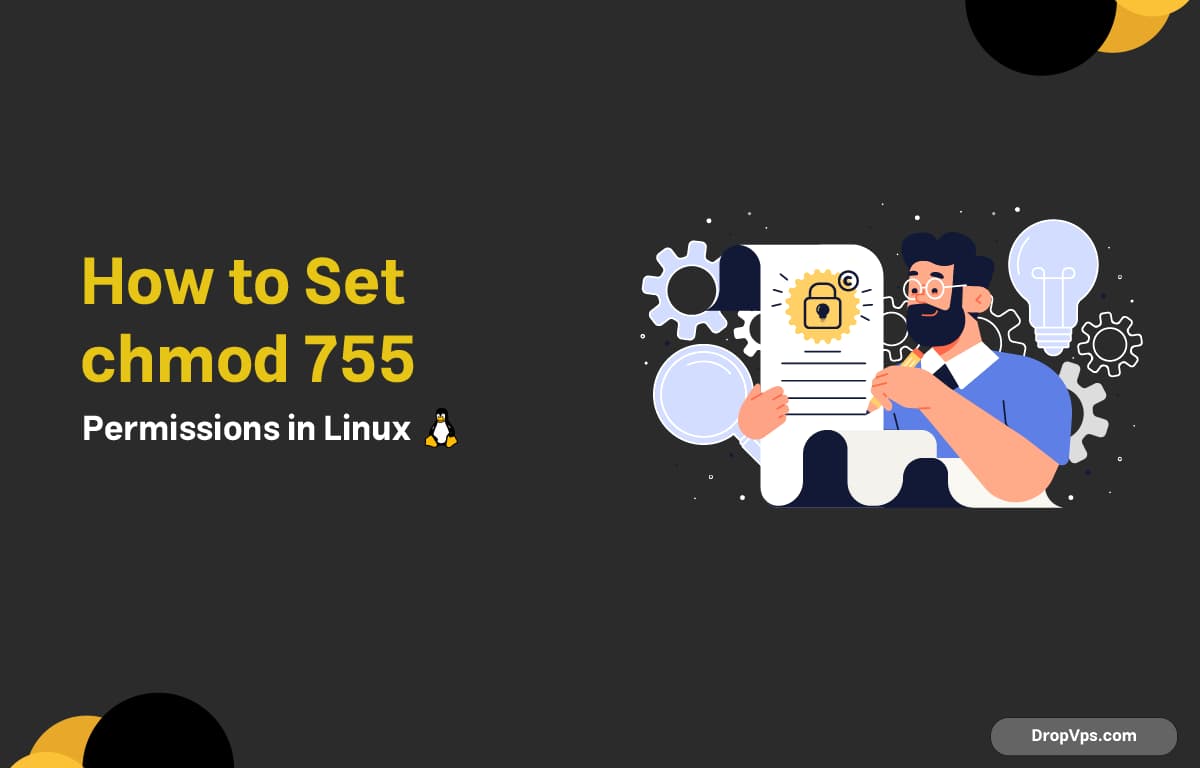DropVPS Team
Writer: Cooper Reagan
How to Set chmod 755 Permissions in Linux

Table of Contents
What you will read?
Understanding and using chmod 755 in the Linux terminal is essential for managing file permissions effectively. This command sets specific permissions that allow the owner of a file to read, write, and execute it, while others can only read and execute. It’s a common permission setting for scripts and directories to ensure proper access and security in a Linux environment.
Check if chmod is Installed
Before using chmod 755, it is important to ensure that the chmod utility is installed on your Linux system. This tool is part of the coreutils package, which is pre-installed on most Linux distributions. Checking this avoids errors during permission modification.
which chmodIf the output shows a file path (e.g., /bin/chmod), chmod is installed and ready to use. If no path appears, you need to install coreutils.
Install coreutils Package if Necessary
If chmod is missing, installing the coreutils package will provide it. This step is necessary because the chmod command comes from coreutils, which contains essential command-line utilities for Linux.
For Debian-based systems like Ubuntu:
sudo apt update
sudo apt install coreutilsFor Red Hat-based systems like Fedora or CentOS:
sudo dnf install coreutilsor
sudo yum install coreutilsVerify chmod 755 Permission Syntax
While chmod does not require installation of any special packages beyond coreutils, ensuring the correct syntax is critical. Using chmod 755 adjusts file or directory permissions appropriately, making it vital to understand how permission numbers map to access rights before applying them.
chmod 755 filename_or_directoryThis command sets read, write, and execute permissions for the owner, and read and execute permissions for group and others.
Use chmod 755 After Installation
Once the chmod utility is ready, applying the chmod 755 permission to a file or directory is straightforward. This step is key for enabling scripts or programs to run while still protecting files from unauthorized modification.
chmod 755 myscript.shThis command allows the owner full access to edit and execute myscript.sh, while other users can only run or read it.
Ensuring the installation and proper use of the chmod 755 command improves security and usability in Linux systems. After verifying the availability of chmod and installing coreutils if necessary, users can confidently modify file permissions to suit their needs. Applying chmod 755 helps set appropriate access controls, essential for smooth file and script execution in multi-user environments.